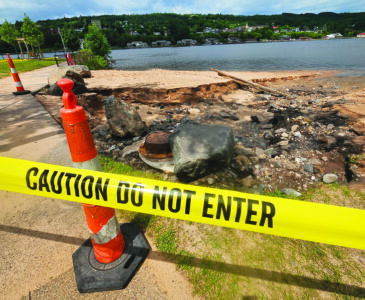Keweenaw Invasive Species Management Area surveying for phragmites
HOUGHTON — The Keweenaw Invasive Species Management Area is working alongside other Upper Peninsula cooperative invasive species management areas to survey for native and invasive phragmites in Houghton, Baraga and Keweenaw counties.
KISMA’s goals with this grant are to
• Prevent further spread of invasive phragmites into water bodies and roadways of the Lake Superior watershed;
• Conduct intensive early detection efforts;
• Treat invasive phragmites to eradicate current populations.
Crew members will survey along roadsides and water bodies for these semi-aquatic grass species in order to pinpoint locations of concern and remove stands of invasive phragmites.
Upcoming survey locations include Lake Michigamme, Rice Lake, Copper Harbor and other smaller water bodies in the area.
What are invasive phragmites and where do they grow?
Phragmites australis subsp. australis is a common reed grass that can grow up to 15 feet tall. Dense thickets of this invasive species can decrease property values and fish habitat, obscure shoreline views and access, and inhibit watercraft mobility. Growth along roadsides and ditches can decrease road visibility and block drainage.
What can the public do?
You can wash aquatic gear like boats, waders and swimming gear before recreating in a different location. Also, you can help decrease the spread of semi-aquatic invasives by reporting any detections using these key invasive phragmites identification:
• Grows to heights ranging from 6 to 15 feet and looks like a very large grass
• Stems are upright, rigid and hollow; persistent in winter; lengthwise ridging along stem
• Leaves are flat and smooth growing 10 to 20 inches long, ½ to 1 inch wide with hairy ligules
• Leaves are green to grayish/bluish-green in color
• Flowers form dense, branched clusters at the end of each stem appearing feathery at maturity
• Seeds found in unison with white hairs
• Large and robust root system
• New growth and identification noticeable in June
• Past year’s growth is brown and can be used for identification before June.
Stands of native phragmites (phragmites australis subsp. americanus) also exist across the Great Lakes basin. Native phragmites are frequently found in wetlands with high biodiversity and supplies food and nesting resources for wetland residents. Care is needed before and during management of non-native phragmites to avoid impacting its native counterpart.




